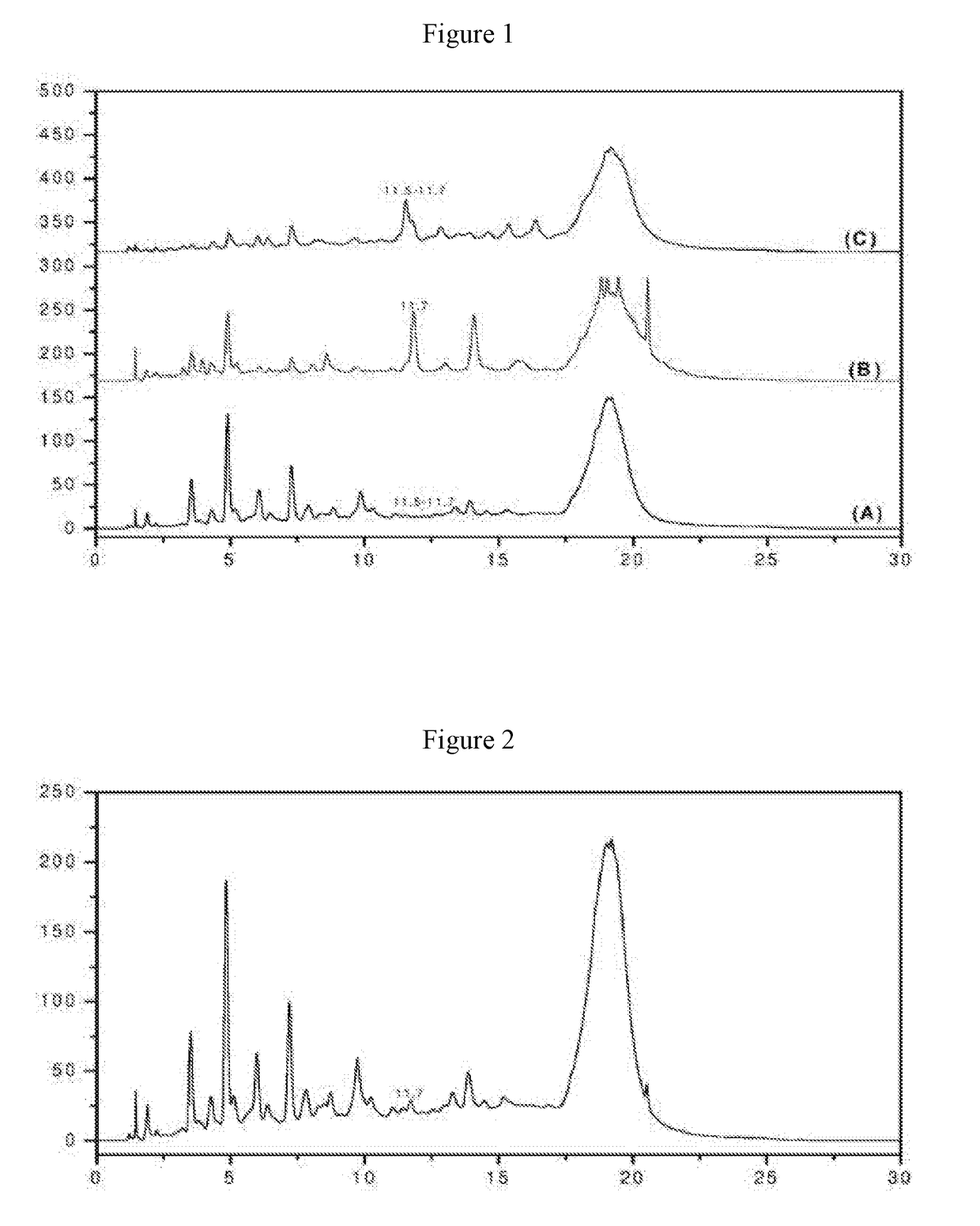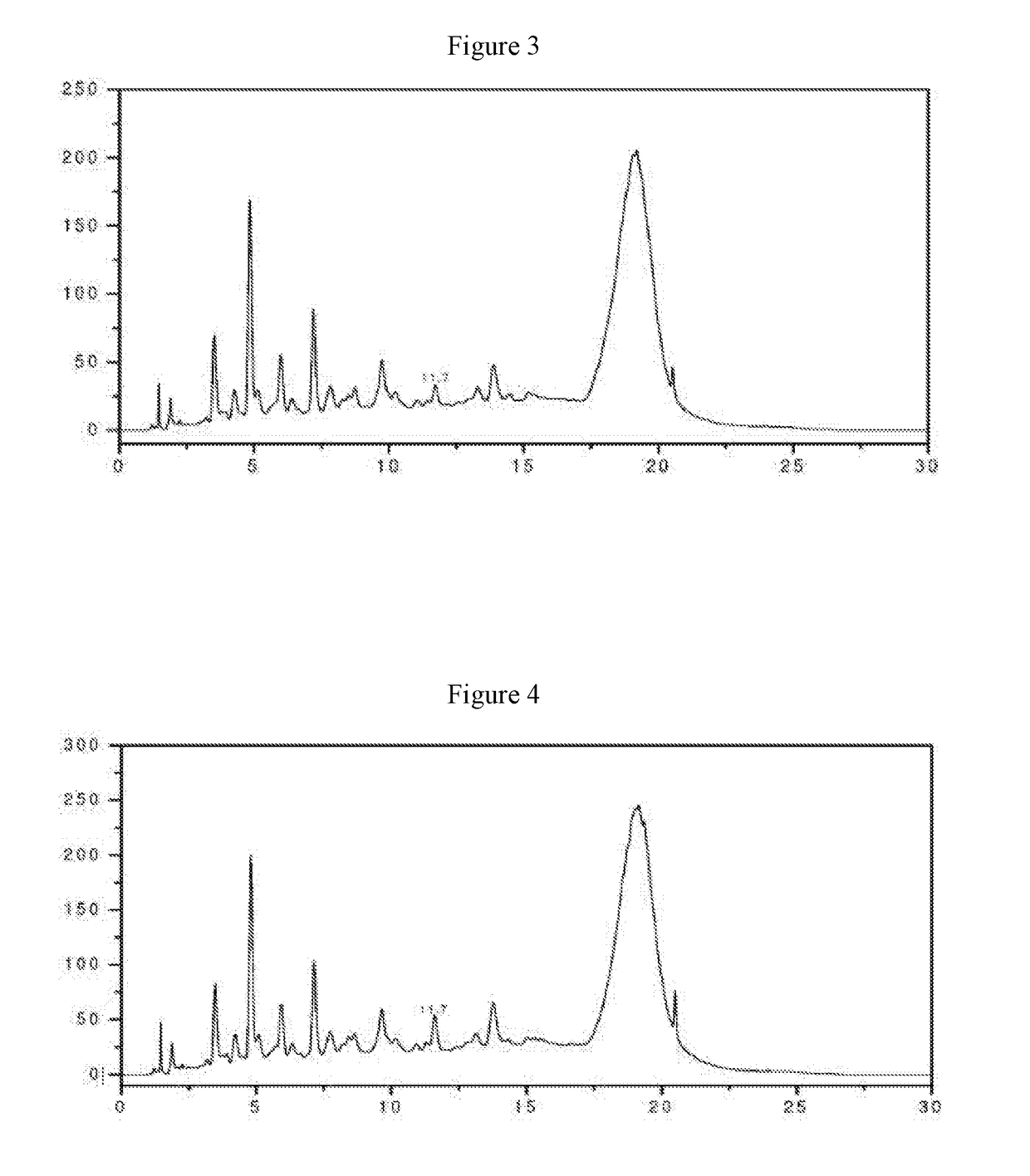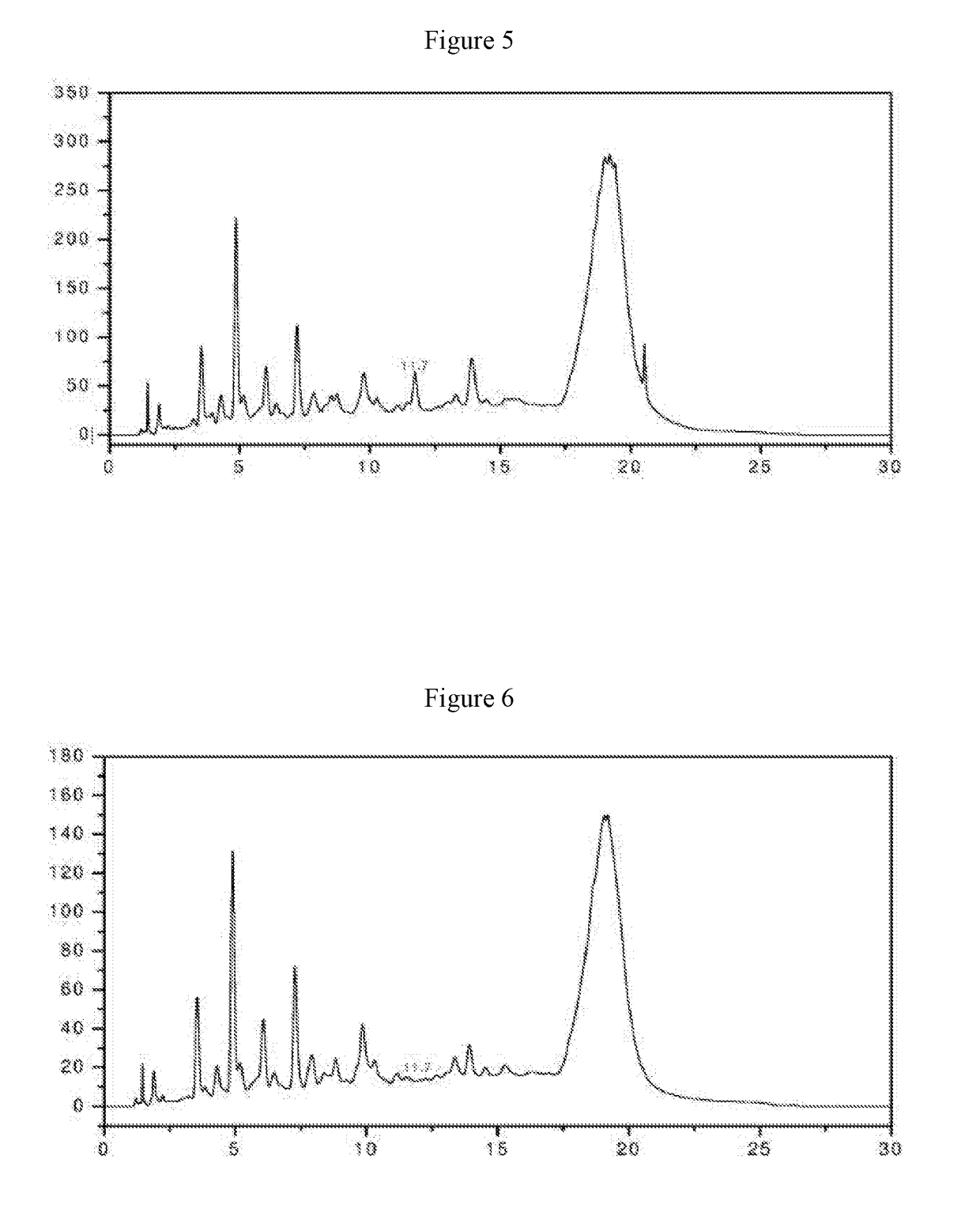Method for identifying grape seed extract authenticity using HPLC fingerprint spectrum
a fingerprint spectrum and grape seed technology, applied in the field of natural extract identification using liquid chromatography technology, can solve the problems of inability to detect whether other extracts are adulterated into the grape seed extract, severe disruption of the market order of grape seed extract, and extremely harmful products, etc., to achieve rapid and accurate analysis, high specificity, and simple operation
- Summary
- Abstract
- Description
- Claims
- Application Information
AI Technical Summary
Benefits of technology
Problems solved by technology
Method used
Image
Examples
example 1
ment of HPLC Fingerprint Spectrums of Grape Seed Extract, Pine Bark Extract and Peanut Skin Extract
[0035]1, Instruments and Reagents
[0036]1.1 Instruments
[0037]Agilent 1260 high performance liquid chromatograph, and Zorbax SB-C18 chromatographic column (5 μm, 150 mm×4.6mm).
[0038]1.2 Reagents
[0039]Ethanol used for extraction was an analytically pure reagent; and acetonitrile used as a reagent for the liquid phase analysis was a chromatographically pure reagent. Grape seed extract, pine bark extract, and peanut skin extract were provided by Chenguang Biotech Group Co., Ltd.
[0040]2. Methods and Results
[0041]For the separation conditions of liquid chromatography, see USP 38, Grape Seeds Oligomeric Proanthocyanidins, and the chromatographic conditions were as follows:
[0042](1) The stationary phase was an octadecylsilane bonded silica gel column (150 mm×4.6 mm, 5 μm);
[0043](2) The mobile phase was (A) acetonitrile, (B) water / formic acid (100 / 0.1, v / v); and the gradient of the mobile phase ...
example 2
ation of Grape Seed Extract Samples Adulterated with Pine Bark Extract
[0061]The identification includes the following steps:
[0062]Step (1): the fingerprint spectrum of the grape seed extract and a fingerprint spectrum of the pine bark extract were established by the same method as in 3.1 and 3.2 of Example 1.
[0063]Step (2): the grape seed extract was adulterated with pine bark extract, and subjected to relevant detection. Homemade grape seed extract was weighed as 1.02 g, 1.10 g, 1.05 g, and 1.09 g, respectively; and 0.03 g, 0.1 g, 0.15 g, and 0.2 g of pine bark extracts were added respectively, i.e. the adulteration amount were 3%, 10%, 15%, and 20%, respectively. The adulterated grape seed extracts were subjected to liquid chromatography detection by the same method as in 3.1 of Example 1.
[0064]The results were shown in FIGS. 2 to 6. It can be seen from the HPLC chromatograms that, the chromatograms of the extracts adulterated with pine bark extract had a significant chromatograph...
example 3
ation of Grape Seed Extract Samples Adulterated with Peanut Skin Extract
[0065]The identification included the following steps:
[0066]Step (1): a fingerprint spectrum of the grape seed extract and a fingerprint spectrum of the peanut skin extract were established by the same methods as in 3.1 and 3.3 of Example 1.
[0067]Step (2): the grape seed extract was adulterated with peanut skin extract, and subjected to relevant detection. Homemade grape seed extract was weighed as 1.01 g, 1.0.5 g, 1.08 g, and 1.09 g, respectively; and 0.03 g, 0.1 g, 0.15 g, and 0.2 g of peanut skin extract were added respectively, i.e. the adulteration amount were 3%, 10%, 15%, and 20%, respectively. The adulterated grape seed extracts were subjected to liquid chromatography detection by the same method as in 3.1 of Example 1.
[0068]The results were shown in FIGS. 7 to 11. It can be seen from the HPLC chromatograms that, the chromatograms of the extracts adulterated with pine bark extract had significant chromat...
PUM
 Login to View More
Login to View More Abstract
Description
Claims
Application Information
 Login to View More
Login to View More - R&D
- Intellectual Property
- Life Sciences
- Materials
- Tech Scout
- Unparalleled Data Quality
- Higher Quality Content
- 60% Fewer Hallucinations
Browse by: Latest US Patents, China's latest patents, Technical Efficacy Thesaurus, Application Domain, Technology Topic, Popular Technical Reports.
© 2025 PatSnap. All rights reserved.Legal|Privacy policy|Modern Slavery Act Transparency Statement|Sitemap|About US| Contact US: help@patsnap.com



